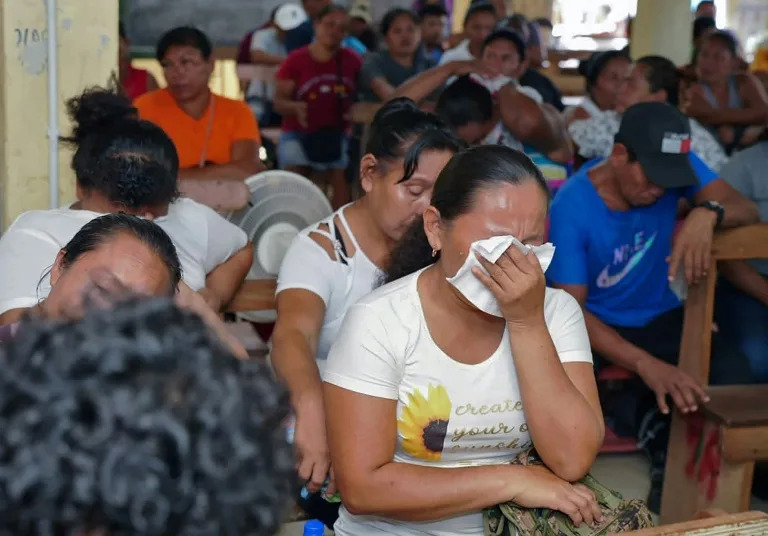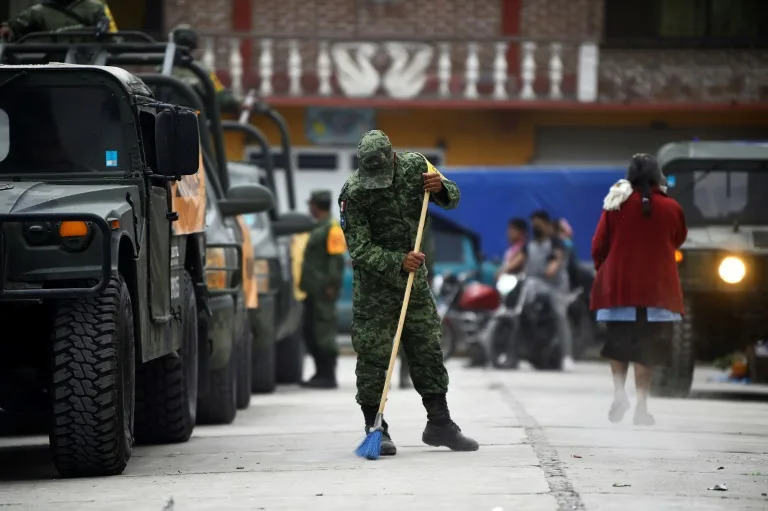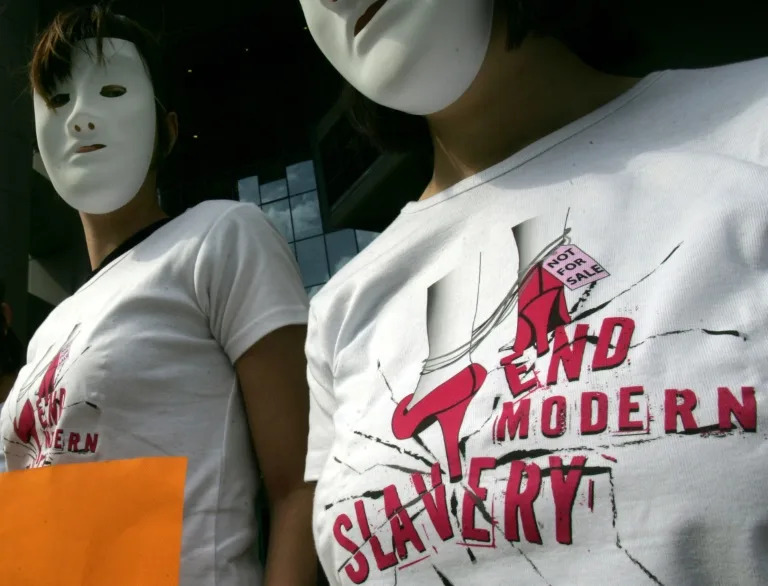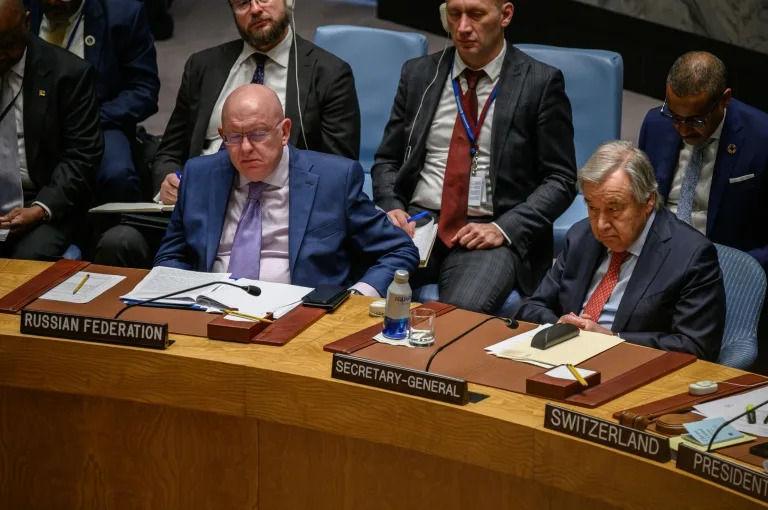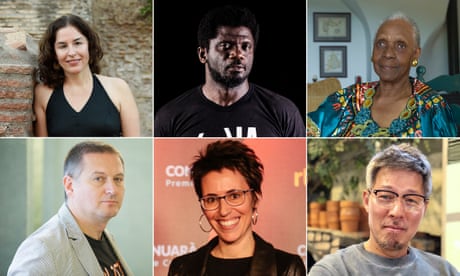From Ukraine to China, leftist president's worldview clashes with G-7's

Brazilian President Luiz Inacio Lula da Silva speaks during a news conference after attending the Group of Seven Summit in Hiroshima on May 22.
© AP
MITSURU OBE,
Nikkei Asia chief business news correspondent
May 22, 2023
HIROSHIMA, Japan -- As Ukrainian President Volodymyr Zelenskyy swooped into the Group of Seven weekend in Hiroshima, a focal point was how he would engage with two invited leaders who remain on the fence between Russia and the West -- Indian Prime Minister Narendra Modi and Brazilian President Luiz Inacio Lula da Silva.
Zelenskyy and Modi sat down for what appeared to be a cordial discussion on the impact of Russia's invasion and potential paths forward. On the other hand, no meeting with Lula happened, and when asked if he was disappointed, Zelenskyy shot back that maybe the Brazilians are.
On Monday, Lula told his side of the story: Zelenskyy, he said, did not show up.
"I was going to have a bilateral with Ukraine" on Sunday afternoon, he told to reporters. "We waited. And then we found out that they were running late." Lula said he went ahead and met with Vietnamese Prime Minister Pham Minh Chin for an hour. Still, there was no sign of Zelenskyy.
"Maybe they had another commitment," Lula said. "That's what simply happened."
Lula, a trade unionist and left-wing politician who was president from 2003 to 2010 and returned to power last year, is frequently at odds with the West. The war in Ukraine is a case in point: He has argued that both sides bear responsibility and that Western support is prolonging the conflict and death. Many developing countries have also become weary of the war's resultant spike in food and energy prices.
Asked if he was disappointed, as Zelenskyy had suggested, Lula denied it but said he was "upset a little bit because I would like to enjoy talking with him." He said he is looking for an opportunity to meet the Ukrainian president some other time.
Sergiy Korsunsky, Ukraine's ambassador to Japan, on Monday said he did not know whether it was a "technical" issue that prevented a meeting. "I have no idea, but they didn't talk," he said.
HIROSHIMA, Japan -- As Ukrainian President Volodymyr Zelenskyy swooped into the Group of Seven weekend in Hiroshima, a focal point was how he would engage with two invited leaders who remain on the fence between Russia and the West -- Indian Prime Minister Narendra Modi and Brazilian President Luiz Inacio Lula da Silva.
Zelenskyy and Modi sat down for what appeared to be a cordial discussion on the impact of Russia's invasion and potential paths forward. On the other hand, no meeting with Lula happened, and when asked if he was disappointed, Zelenskyy shot back that maybe the Brazilians are.
On Monday, Lula told his side of the story: Zelenskyy, he said, did not show up.
"I was going to have a bilateral with Ukraine" on Sunday afternoon, he told to reporters. "We waited. And then we found out that they were running late." Lula said he went ahead and met with Vietnamese Prime Minister Pham Minh Chin for an hour. Still, there was no sign of Zelenskyy.
"Maybe they had another commitment," Lula said. "That's what simply happened."
Lula, a trade unionist and left-wing politician who was president from 2003 to 2010 and returned to power last year, is frequently at odds with the West. The war in Ukraine is a case in point: He has argued that both sides bear responsibility and that Western support is prolonging the conflict and death. Many developing countries have also become weary of the war's resultant spike in food and energy prices.
Asked if he was disappointed, as Zelenskyy had suggested, Lula denied it but said he was "upset a little bit because I would like to enjoy talking with him." He said he is looking for an opportunity to meet the Ukrainian president some other time.
Sergiy Korsunsky, Ukraine's ambassador to Japan, on Monday said he did not know whether it was a "technical" issue that prevented a meeting. "I have no idea, but they didn't talk," he said.

Ukraine's President Volodymyr Zelenskyy and U.S. President Joe Biden speak during the G-7 Summit in Hiroshima on May 21.
© Ukrainian Presidential Press Service via Reuters
Korsunsky argued that Lula "should be ready to meet President Zelenskyy at least to understand what's going on." He lamented the attitude of some world leaders, raising the example of what Syrian President Bashar al-Assad did during Zelenskyy's address to the Arab League Summit in Jeddah on Friday. The Syrian president "took off his interpretation headset to send a message that he doesn't want to listen," Korsunsky said.
Calling Brazil a "big important player," he said, "They should meet, they should talk."
But in any conversation, Lula and Zelenskyy would be coming from diametrically opposed perspectives.
While Zelenskyy asks for more advanced weapons to defeat Russia, Lula argues against such assistance. "My fear is that we are moving toward the possibility that we can have a more ferocious war with more powerful weapons," Lula said on Monday.
While Zelenskyy demands a complete withdrawal of Russian troops and restoration of his country's territorial integrity, which he says is not negotiable, Lula is calling for a cease-fire and negotiations.
"Both parties want 100% from each other," Lula said. "Every party will have to concede a little. Russians should not have the right to [invade]. Ukraine is right in defending its own territory. But this will last until they are willing to talk."
Major countries with no direct stake in the war could serve as mediators, Lula added, naming China, India, Indonesia and Brazil.
Lula used his Monday news conference to hammer home a worldview that highlighted other points of friction with the G-7 -- a vision of more autonomy from the U.S. and deeper partnership with China, in contrary to the industrialized economies' efforts to "de-risk" from Beijing.
Korsunsky argued that Lula "should be ready to meet President Zelenskyy at least to understand what's going on." He lamented the attitude of some world leaders, raising the example of what Syrian President Bashar al-Assad did during Zelenskyy's address to the Arab League Summit in Jeddah on Friday. The Syrian president "took off his interpretation headset to send a message that he doesn't want to listen," Korsunsky said.
Calling Brazil a "big important player," he said, "They should meet, they should talk."
But in any conversation, Lula and Zelenskyy would be coming from diametrically opposed perspectives.
While Zelenskyy asks for more advanced weapons to defeat Russia, Lula argues against such assistance. "My fear is that we are moving toward the possibility that we can have a more ferocious war with more powerful weapons," Lula said on Monday.
While Zelenskyy demands a complete withdrawal of Russian troops and restoration of his country's territorial integrity, which he says is not negotiable, Lula is calling for a cease-fire and negotiations.
"Both parties want 100% from each other," Lula said. "Every party will have to concede a little. Russians should not have the right to [invade]. Ukraine is right in defending its own territory. But this will last until they are willing to talk."
Major countries with no direct stake in the war could serve as mediators, Lula added, naming China, India, Indonesia and Brazil.
Lula used his Monday news conference to hammer home a worldview that highlighted other points of friction with the G-7 -- a vision of more autonomy from the U.S. and deeper partnership with China, in contrary to the industrialized economies' efforts to "de-risk" from Beijing.

Lula says he wants the BRICS grouping to create its own currency like the euro.
(Photo by Kohei Fujimura)
In 2024, Brazil will host leaders of the Group of 20 and BRICS -- two major forums including countries of the so-called Global South. Lula was one of the driving forces behind the creation of BRICS -- Brazil, Russia, India, China and later South Africa.
High expectations for the BRICS economies have soured recently, with Russia under international sanctions while China faces trade restrictions and intensifying competition with the U.S. over emerging technologies. But Lula said Brazil wants to do more business with China, already its top partner, and hopes to create a common BRICS currency.
This is one of several currency ideas he has floated as he seeks to reduce dependence on the dollar. Earlier this year, Brazil and Argentina said they were starting preparatory work on a common currency unit of account for denominating trade, and that they hoped to invite other Latin American nations to join -- a proposal that has met with considerable skepticism and even derision.
While visiting China in April, Lula also called for ending dollar dependence, as Brasilia and Beijing move to enable direct trade in their respective currencies.
"We can't continue to rely on one currency that you can't print," Lula stressed on Monday, referring to the greenback. "I hope that the central banks of the BRICS will create a new currency, like the euro. We can do it."
The first job, he said, is to lay a foundation of the right "political and economic conditions."
Additional reporting by Andrew Sharp.
In 2024, Brazil will host leaders of the Group of 20 and BRICS -- two major forums including countries of the so-called Global South. Lula was one of the driving forces behind the creation of BRICS -- Brazil, Russia, India, China and later South Africa.
High expectations for the BRICS economies have soured recently, with Russia under international sanctions while China faces trade restrictions and intensifying competition with the U.S. over emerging technologies. But Lula said Brazil wants to do more business with China, already its top partner, and hopes to create a common BRICS currency.
This is one of several currency ideas he has floated as he seeks to reduce dependence on the dollar. Earlier this year, Brazil and Argentina said they were starting preparatory work on a common currency unit of account for denominating trade, and that they hoped to invite other Latin American nations to join -- a proposal that has met with considerable skepticism and even derision.
While visiting China in April, Lula also called for ending dollar dependence, as Brasilia and Beijing move to enable direct trade in their respective currencies.
"We can't continue to rely on one currency that you can't print," Lula stressed on Monday, referring to the greenback. "I hope that the central banks of the BRICS will create a new currency, like the euro. We can do it."
The first job, he said, is to lay a foundation of the right "political and economic conditions."
Additional reporting by Andrew Sharp.



















